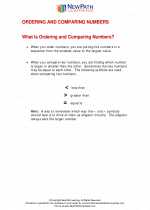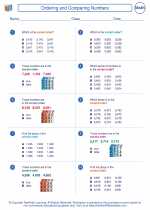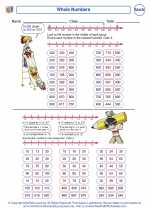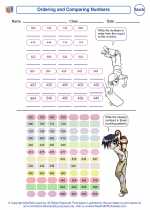Hexagon
A hexagon is a polygon with six sides and six angles. The sum of the interior angles of a hexagon is always 720 degrees. Each interior angle of a regular hexagon measures 120 degrees. A regular hexagon has all its sides and angles equal in measure.
A hexagon can be divided into six equilateral triangles with equal sides and angles. The formula to find the perimeter of a hexagon is P = 6s, where P is the perimeter and s is the length of one side. The formula to find the area of a regular hexagon is A = (3√3 / 2) × s^2, where A is the area and s is the length of one side.
Real-life examples of hexagons include honeycomb cells, bolts and nuts, and some forms of crystals and gemstones.
Understanding the properties and characteristics of hexagons is important in geometry and spatial reasoning.
.◂Math Worksheets and Study Guides Third Grade. Ordering and Comparing Numbers

 Activity Lesson
Activity Lesson
 Worksheet/Answer key
Worksheet/Answer key
 Worksheet/Answer key
Worksheet/Answer key
 Worksheet/Answer key
Worksheet/Answer key
 Worksheet/Answer key
Worksheet/Answer key
 Worksheet/Answer key
Worksheet/Answer key
 Vocabulary/Answer key
Vocabulary/Answer key
